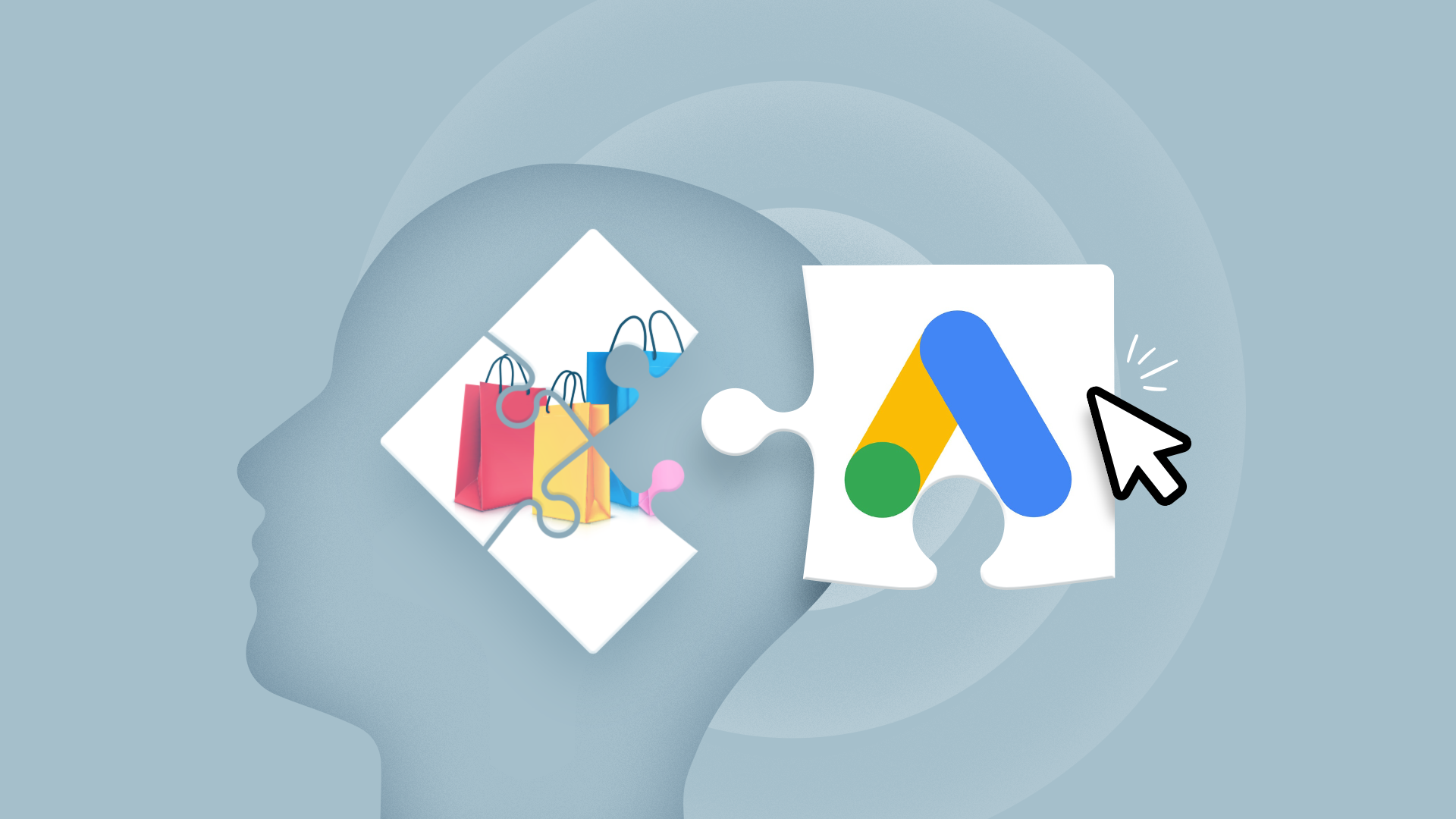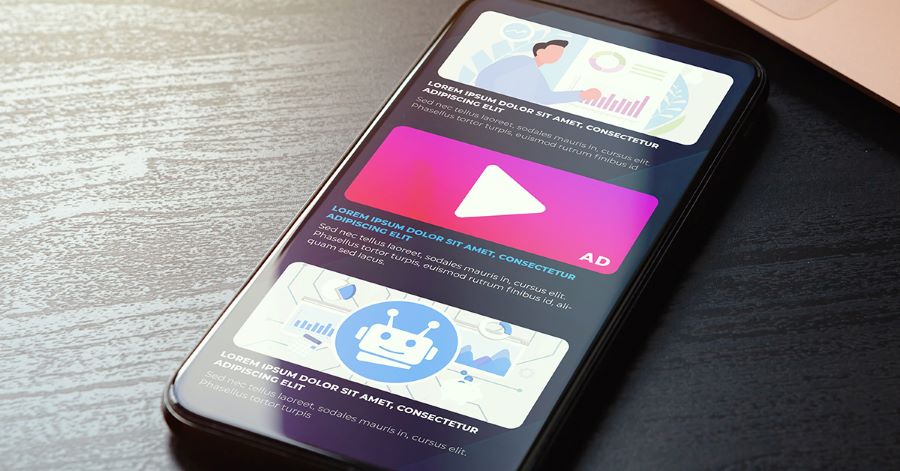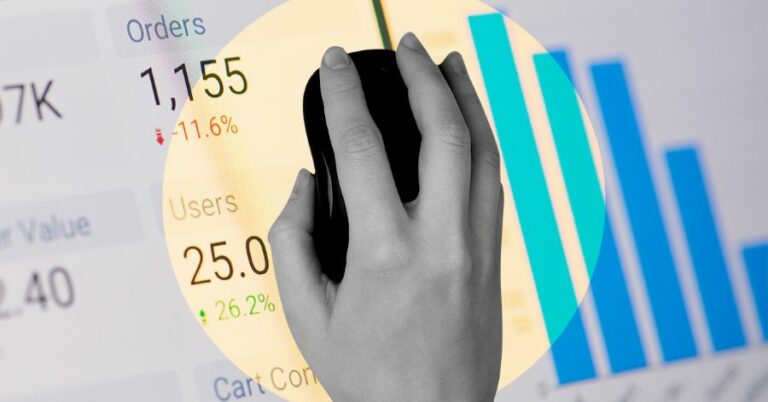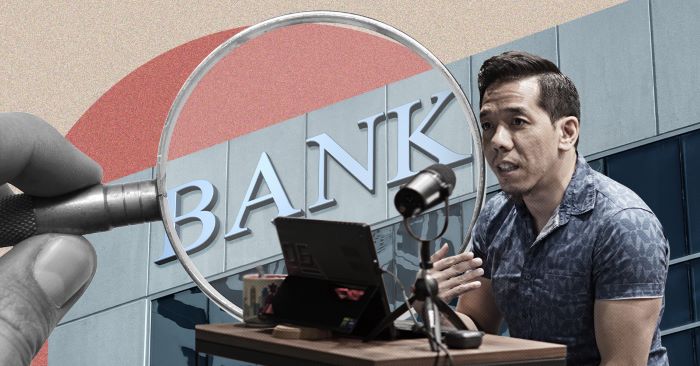Truelogic Episode 98 Recap: Winners and Losers: Google Ads Behavior

Google Ads Behavior in the Philippines
Berns San Juan: Welcome to another episode of the Truelogic DX podcast. And today, this is another winners and losers episode. In a previous episode, we talked about which industries were winners and losers in terms of social media engagement, conversion, and acquisition. And for this episode, we’re going to do the same thing, but for Google Ads behavior.
So did you know that we spent about $1.76 billion, which is about a 10% year-on-year change on digital advertising in 2023? That’s huge. We spend about a little over 15 billion pesos every quarter, which almost doubles during the Christmas season, which makes sense, right? It’s the Philippines. We have the longest Christmas season.
Meltwater estimates that this represents about 59.1% of the total ad spend in the country. I want to put a grain of salt on that because media spend is not as transparent, as traditional ad spend is not as transparent in the Philippines, but at least digital is easily trackable. But another compelling stat that we found is that businesses spend $582.8 million, and this is in dollars, annually on search ads in the Philippines. And this gives it about a 33.1% share of all digital advertising spend.
There are about 4.46 billion searches that are done by Filipinos on Google every month and Google owns 96% of the search share in the country. That’s immense. That’s ginormous. And so when it comes to search, Google is still clearly king. But then how do you allocate a budget to Google what should you expect and which industries are going to find it easy slash difficult, which industries are going to find it cheap slash expensive, and that’s what we’re going to talk about in this episode. So let’s get started.
Google Ads Benchmarks by Industry
Berns San Juan: I want to begin by looking at international benchmarks first. The first benchmark I want to look at is the cost per click, the cost of the ads for specific industries. So a lot of this data is based on Wordstream benchmarks. These are international benchmarks. And from most expensive to least expensive, from Google Display, the most expensive one, not surprisingly, dating and personals. $1.49, so P80 per click on a display ad. And you know, if you’ve been in digital long enough, you know that the display ads are not the most engaged, not the highest converting channel. They’re usually cheap, right?
Normally for me, I like my display ads in the cents, not even in the cents in dollars. I like them in the cents in pesos. Or if they’re pesos, I want them in the single digits in pesos. But internationally, dating and personals are about a dollar 49. So roughly about P80 per click. For finance and insurance, it benchmarked at about $0.86. For consumer services, it’s $0.81, and B2B services are $0.79. Employment services are $0.78. Real estate, $0.75. Legal, $0.72. Health and medical, $0.63. Advocacy, $0.62. Home goods, $0.60. Auto-related searches, $0.58. Technology, $0.5. Education, $0.47. E-commerce, $0.45 cents. Travel and hospitality, $0.44.

In short, everything that I just mentioned on the display ad side amounts to over P25 per click of a display ad. The international benchmarks for Google display are expensive. And so when you’re using, if you’re a Filipino company and you wanna tap the international market, these need to be the budgets you need to be prepared for. Now, how does this contrast with international benchmarks for search ads?
Well, for search ads, dating, and personals are the most expensive in terms of banner ads, in terms of display ads, for search ads, the most competitive and therefore the most expensive are lawyers. Surprise, surprise, right? It’s not a surprise. With costs per click averaging at about $6.75, that’s nuts. That’s almost P400 per one click. A click, not a conversion, not a lead. A click, $6.75. Consumer services follow at about $6.40. Technology at about $3.80. Finance and insurance at $3.40. B2B at $3.33. Home goods at about $2.90. Dating and Personals on Search, only $2.78, which is pretty cheap. This is usually a very expensive vertical.
And remember, these benchmarks are not an average of several years. These benchmarks are against 2023, right? And it seems like the cheapest benchmark in terms of cost per click, which is a bit of a surprise, is E-commerce with $1.16. And the working theory that I have in terms of why e-commerce is $1.16 in Google is probably because when people want to do e-commerce and they are Amazon merchants, Amazon sort of has a way of encouraging them to channel that spend within the Amazon merchant channel versus doing Google shopping ads that lead to their Amazon pages.
Cost Per Click by Industry in the Philippines
So these are the costs per click in terms of display ads and search ads. Now let’s talk about the Philippine context. What I want to do is now that we’ve talked about the benchmarks and I’ll mention the benchmarks again, what I want to talk about is what are the costs per click in the Philippines, which ones are the most expensive, and then which ones are the cheapest. So by the same token, let’s do cost per click on display ads first. The industries with the most expensive costs per click on average, these are true logic benchmarks, are finance and insurance P5.91.
Okay, remember that the international benchmark I mentioned earlier is $0.86, so about P50. In the Philippines, the cost per click for the finance and insurance vertical is less than P6. So still very competitive or when I say competitive I mean still very cost effective, right? You still get a lot of bang for your buck at P5.91. For industrial services, the average display banner cost per click is about P4.66 cents. The international benchmark is about P30 pesos, so about $0.54.
The industries with the least expensive cost per click, are the ones that are still relatively cheap. Consumer services clocks in on our benchmark at P2.56. The education, app displays banners for education, for universities, for online courses, clocks in at about P2.45 a click, display, not search, display. E-commerce clocks in at about P2. These are probably remarketing ads which is why they’re remarkably cheap. Health and Medical clocks in at about P0.82 cents pesos, right which is terrific because the Health and Medical benchmark internationally is about 0.63 cents dollars. Right? So that’s about P35 to P40.
But in the Philippines, a banner ad click is only P0.82. Real estate banner clicks are only P0.81, amazingly cheap. Internationally, they’re $0.75. Unemployment services only clock in at about P0.07, amazingly cheap.

Now, let’s contrast the most expensive costs per click on display versus the most expensive costs per click on search ads. This is when you do a Google search, and then there’s a sponsored ad, like the first one, two results at the top is a sponsored result, is an ad result.
So the most expensive cost per click on search ads in the Philippines is still the finance and insurance industry. On search, they’re about P50.69. So almost P51. The international benchmark is $3.44, but the cost per click for the finance and insurance industries is about… is a little less than P51. Industrial services are at P46.13 cents with an international benchmark of $2.56, so for industrial services, that’s still pretty expensive.
I’ve not personally observed this to be a highly competitive industry. So I’m just wondering why their cost per click is so expensive. These are pretty expensive. For health and medical, $42.76. This makes sense to me. This makes sense to me. But for industrial services, I don’t know why it’s that expensive. Health and medical is at
P42.76 against an international benchmark of about P170, about $2.62. E-commerce search clicks are P39.79 cents, so pretty expensive. Remember that e-commerce clocks in as one of the cheaper, it’s one of the winners on display costs per click, right? On display, a click to an e-commerce ad is two pesos, but on search, a click to an e-commerce ad is almost P40 pesos, right? That’s a crazy gap between the two.
The industries that are the winners when it comes to the most reasonable cost per click on search ads are consumer services clocking in at P21, and beauty services at P17 which is amazingly cheap considering the international benchmark is $2.62 which is about P130 I think. But beauty services are about P17.40. And then education’s cost per click at less than P7.
Engagement by Display and Search Ads
Okay, we just talked about costs per click and the winners and losers in terms of the cost to acquire a visitor, right? From most expensive to least expensive. Now we’re going to talk about engagement. Who are the easiest to engage and who are the most difficult to engage? So in terms of display ads, and the way we’re measuring engagement, can you get them to click? Can you get them to click? The engagement with an ad is a click, not a conversion, right? So these percentage figures are not conversions. They’re just clicks. And it seems like the most engaged audiences, the most engaged customers are employment services at 5.16%. That’s actually, that’s pretty good. That’s pretty good.
Against international benchmarks, the click-through rate for employment services internationally is only 0.5, 0.6, about 0.6 I would say in terms of CTR. But in the Philippines, the click-through rate of employment service ads is at about 5.16%. Our real estate benchmark for CTR is about 4.57%. That’s pretty good. Now, what am I basing my pretty good on when you run ads? If it’s displayed, you get greater than 1%. You’re doing great. If you’re doing search ads and you do more than 3%, you’re doing great.
So for real estate, 4.57% is on display. That’s amazing. For finance and insurance, it’s 4.21% click-through rate. And for industrial services, it’s 3.65%. And for education, it’s 3.3%. The most disengaged audiences are for consumer services. That’s just 2.1%, health and medical, that’s just 2.3%, and e-commerce, which is only 1.6%, and also because the ads are everywhere. So the winners of most engaged, highest click-throughs are employment services and real estate, both of them clocking close to 5% CTR on display, right? So that means against other industries, they’re doing 500% better.
In terms of search ads, so remember that e-commerce is the least engaged when it comes to display ads because there are also a ton of display ads right like that are e-commerce related. I mean how many of you guys have seen a Lazada banner in the last 24 hours right? Exactly my point. However, when it comes to search ads, e-commerce audiences are the most engaged giving e-commerce click-through an 18.5% click-through rate. That is ginormous because normally it’s about 3%. The international benchmark for e-commerce search ads is about 2.7%.

So for the Philippines to do an 18.5% CTR against e-commerce is amazing. Consumer services audiences tend to have a click-through rate of about 12.43%, competing against a global benchmark of 2.4%, and education search ads which was sort of one of our winners on display, right? Has about an 11% click-through rate against a benchmark of 3.78% internationally. So who has the lowest click-through rates? So you can’t win them all. You can’t win them all.
So if real estate was a winner on display ads, on search ads, they’re not winners. On search ads, their click-through rate is 0.61%. They are one of the lowest search ad click-throughs. And even against an international benchmark, the international benchmark for search ads that are realistically related is about 3.7%. They do pretty well internationally. Health and medical is also a bit of a low in the Philippines. But the international benchmark is 3%. It does 8% in the Philippines. So not too bad, not like real estate.
But the winners for search ad engagement are e-commerce, consumer services, and education with the losers being real estate and health and medical which are the two lowest. Okay, I know I just threw a lot of numbers at you. So what I want to do is I sort of want to give you guys a summary of by industry. If you fall in this industry, this is what your digital advertising landscape looks like. Just based off, and remember, I’m doing this based off of local benchmarks. I’m going to stop talking about the international benchmarks.
Who are the winners and losers?
Finance and Insurance
Let’s begin with finance and insurance because they appear both as winners and losers. In terms of customer acquisition, in terms of the ability to reach an audience, it’s a bit hard on both display ads and search ads. In terms of click-through rate, the click-through rate does pay off. The engagement rate of the finance and insurance audience is fairly high, higher than the international benchmark. They are easy to engage on both search and display. Your CTR, your click-through rates tend to be pretty high if you engage them on both display and search.
However, conversion is hard, right? Conversion is hard primarily because a majority of the Filipino population is not very financially savvy yet. And then it is a financial commitment and it is hard to part people with their money. So this one, this is where you stand if you’re in the financial and insurance industry.
Industrial Services
If you are in industrial services, audience acquisition is going to be tough for you on both display and search ads. They’re not the easiest customers to find and they need to pay more attention to ads. And so you should rethink your Google Ads strategy if you belong in industrial services.
In terms of engagement, and acquiring a decent click-through, I would say it’s pretty reasonable, right? They’re moderately engaged in display ads. And so if I were in industrial services, I would begin my Google ads experience by utilizing remarketing and audience targeting on display. I would not do search ads yet because industrial services are not… They’re one of the losers in our engagement section. They don’t have the best CTR by local benchmarks. And then conversion is hard on both display and search. It’s hard to convert them. It’s hard to acquire a sale utilizing the Google ad platform.
Okay, now, by the way, when I say hard, I don’t mean impossible, don’t do it, right? I just mean I’m setting your expectations. It’s doable, it’s just hard.
Consumer Services

Audience acquisition is reasonable on both display and search ads. Engagement is also reasonable for consumer services. That’s pretty moderate on display ads and they are highly responsive to search ads. What that means is you’re going to get a reasonable click-through rate on your ads, on your display ads, and you’re going to get an unusually high click-through rate on your search ads. So you spend on ads, a lot of people will see it and they will click it easily.
Conversion, moderate. They’re, they’re reasonably convertible. You will probably get a pretty good ROI against your ad spend easily in consumer services.
Education
Now if you’re in education, acquisition, reasonable. The acquisition is moderate on display ads and easy on search ads. They are the easiest audience to find. Right? Education-wise, your target audience is the easiest to find on search ads and they’re also pretty easy to engage on display ads. But getting them to click through is, I would say, moderate on both. They don’t have the most amazing click-through rates in terms of the way they respond to ads, but they will meet or beat the benchmark.
So I would say have moderate expectations on your click-through rates when it comes to both search and display if you are in the education sector. Conversion is also pretty moderate. You’re probably going to get a pretty good ROI on lead acquisition if you are in the field of education. I might even argue easily. I think student acquisition and enrollment acquisition might be easy when you are in search ads because in a search ad, it becomes a motivated behavior. It becomes a motivated search, right? Also granted, currently with our weird school year, the peak period for advertising is about April, or May with a very huge peak in May. But I heard an announcement that the school year is moving in the next two years. And so anticipate that your peak season will probably move earlier. It will probably not be May for the next two years.
E-commerce
If you are in the field of e-commerce and you’re exploring Google Ads, display, or search, the acquisition is reasonable on both display ads and search ads. You will beat the global benchmark, you’re probably not going to spend a lot, you’re going to spend a reasonable amount, and finding your audience is not going to be like looking for a needle in a haystack. Engagement is pretty low on display ads, which is okay because it’s pretty cheap on display ads. But it’s very high on search ads. And so expect great click-through rates, expect your click-through rates to pay off on search ads. Do not have very high expectations of your click-through rates on your display ads.
Conversion, reasonable, like moderate, like not high, not low. This is for both display and search. So if you’re in e-commerce, both channels are available to you, but just have reasonable expectations that your display ads are just for eyeballs and your search ads are for conversions.
Health and Medical
If you are in the health and medical field, acquisition is easy on display and it’s a bit more difficult on search ads. So acquisition, and finding your audiences are easy on display, getting the right audience on search is a bit more difficult. Their engagement, your click-through rates on display ads are going to be low and they’re going to be reasonable on search ads.
And then conversion though, like if you can get them to click like their click-through rates are not high, but if you can get them to click, their conversions are easy on display and you might have a harder time converting a search visitor. So just take note of that contrast. They have great click-through rates on search, but not great conversions, low click-through rates on display, but easy conversions.
Real Estate
Acquisition is easy on display ads, engagement is high on display ads and low on search ads for real estate and that’s because real estate is a sexy vertical. Like if you can see it, it’s visually appealing, they can get you to click and conversion is still relatively easy. Conversion is still relatively easy.

Employment Services
Acquisition is easy. It’s easy to sell a job. Engagement is high, specifically on display ads, and conversion is still relatively easy. So I hope with the 8 verticals that we benchmarked and that we talked about, and having compared and contrasted them on Google Search and Google Display, you managed to take something out of this winner and loser-episode.
With that, I’ll conclude this podcast. Again, I’ll thank our marketing team for continuing to produce these podcasts. I want to thank our friends at Podmachine for continuing to power these podcasts. We’re listening to you on social media. If you haven’t subscribed to us, please do. Subscribe to our Spotify, Google, and Apple accounts so that you can get alerts whenever we publish a new one It’s appreciated. And I will see you guys on the next episode. Thank you very much. Cheers.










